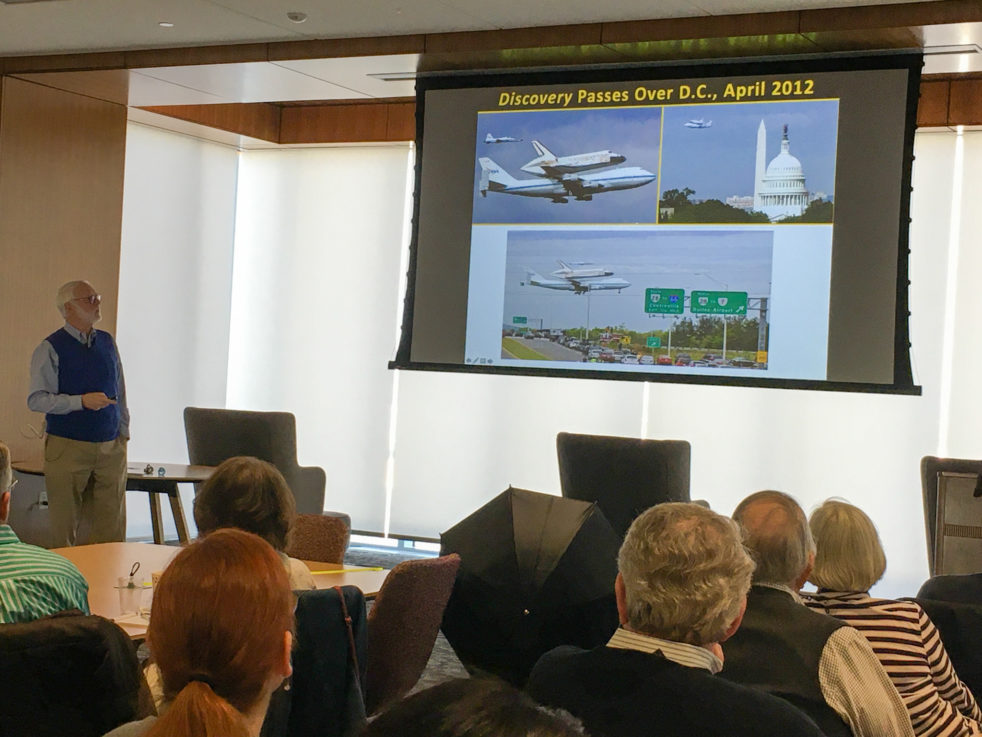On any tour of campus, a guide will doubtless stop by the Clough Undergraduate Learning Commons (the Culc) and discuss its staging as the Googleplex in “The Internship.” Upon enrolling at Tech, students quickly learn the building is valued far more than for its debut in a major film for it also serves as a haven of knowledge.
On Jan. 30, the building’s namesake, President Emeritus G. Wayne Clough, returned to campus to share his perspective on this topic of knowledge.
Clough’s perspective of knowledge has not only been shaped by his experiences as both a former student and president at Tech, but has also been shaped by his tenure as the Secretary of the Smithsonian Institution in the nation’s capital. In his discussion, Clough focused on the democratization of information through the use of digitization.
He started off with a look back at the early ideas of democracy as formulated by America’s Founding Fathers, ideas which emphasized the importance of a knowledgeable and informed public.
“Promote then, as an object of primary importance, institutions for the general diffusion of knowledge,” Clough shared, quoting George Washington. “In proportion as the structure of a government gives force to public opinion, it is essential that public opinion should be enlightened.”
Fast forward just a few centuries later, and around 2.5 quintillion bytes of data are now generated every day.
Clough shared how this colossal number of data generation not only comes with advantages — specifically in reference to the digitization of databases which now provide the public with access to hundreds of millions of books, films and other works of art — but also comes with its dangers.
Clough explained how concerns over reliability have not only plagued politics with increased rates of fake news, but have also threatened academia with growing negligence for a dive deeper than a search engine’s top hit.
“When you go to the archives, sometimes they take you to the things that you like, as opposed to the things that will tell you the real story,” Clough explained.
Clough referred to the artist Winslow Homer as an example of the shortcomings of this surface-level search.
While an online search will pull up some of his best works, such as scenic paintings of the ocean, it will fail to tell the history of his career in the Civil War which greatly shaped his artistic career.
“There’s a lot there,” Clough said, “but what do you do with it? Is it just going to sit there? Is it ever going to reach us? Are we ever going to do anything with all of this?”
Clough discussed the ways in which digitization can provide answers on what to do with all of the data out there and can also provide relief from the superficial “top hit” approach. He spoke of the Smithsonian’s collection of nearly 15 million digital archives that has created an online presence for the Institution, which encompasses an expansive network of museums, exhibits and research centers.
Clough shared examples of the digital archives, which began with the digitization of over 45,000 bumble bees (“People like bumbless,” he joked). The collection has now expanded to include a letter from the famed artist Thomas Hart Benton telling a young Jackson Pollock that he saw his “stuff” and he would be a “fool if he didn’t cut out the monkey business and get to work.” Even the glass plates that the women “computers” at Harvard College Observatory began working with in the 1870s can be now also be accessed online.
Clough also explained that a digital enterprise includes far more than just digitization, also encompassing endeavors such as supercomputing for astrophysicists, data management for environmental research, online teaching tools for educators and social media for public engagement.
When NASA and the Smithsonian partnered for the nose-to-nose meeting of the space shuttles Discovery and Enterprise — an endeavor achieved through the work of Tech graduates Clough noted — more than one billion people were engaged with social media.
Clough also discussed the expansion of the 3D printing digital collection,. He even brought personal examples which included one of the four head bust sculptures that have been printed of President Barack Obama, the original of which can be viewed at the National Gallery of Art.
Clough’s latest book, Things New and Strange: A Southerner’s Journey Through the Smithsonian Collections, give readers even more personal examples that have been made possible with the help of digitization.
“I used [the collections] to explain how a place called South Georgia became South Georgia over 13000 years over a set of collections. I learned things I never imagined,” said the Douglas
native.
Clough explained how the democratization of information has made this endeavor of self-discovery possible for all: how with just the click of a keyboard, people can learn unimaginable reports from the past.
“You can do it yourself,” said Clough. “You can learn about yourself. It’s a new way to use the collections: not curators telling you what to do, you do it.”
Clough spoke of the urgency of individuals to use the information available to them, especially in the political realm.
“You can’t be passive about it,” he said in talking about digital technology. “Obviously, the people running elections today know this.
“They are picking up on who the people are that walk into the vicinity of their rallies. They know you’re there, and they will contact you.”
In order to protect the ideas of democracy held by the nation’s Founding Fathers, Clough advocated for further advancement in the democratization of information.
“Libraries, museums and archives need to be aggressive on behalf of our democracy,” said Clough. “To let people know what’s available and to help them learn about what George Washington said.”
